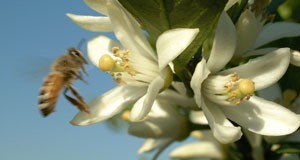Abstract
As of June 2016, there are over 4,000 registered beekeepers in the state of Florida and 440,000 managed colonies. According to the USDA, 2012 Florida beekeepers produced over 11 million pounds of honey. The average winter colony loss in Florida as reported by the Bee Informed Partnership Management Survey was the third lowest rate across the nation with only Hawaii and Texas reporting lower colony losses in that time period. This revised 4-page fact sheet gives an overview of what makes Florida a unique state in which to keep honey bees. It explains the ins and outs of beekeeping in Florida, with descriptions of some of the hazards, a few of the important nectar-producing plants, special considerations for seasonal colony growth and management, and Florida beekeeping regulations. Written by Tomas A. Bustamante, Jamie D. Ellis, and Mary Bammer, and published by the UF Department of Entomology and Nematology, September 2016.
References
Bee Informed Partnership [BIP]. 2016. Management Survey Results (2014-2015). https://beeinformed.org/wp-content/uploads/2015/09/Demographics-Compilation.pdf

